Bob Mayer's Blog, page 3
July 23, 2025
Crowd Crush Is Not A Stampede
WHAT TO DO IN A CROWD CRUSH – it happens fast and in varied venues. Even if you think this will never apply to you, taking a moment to learn what to do in this situation could save your life and the lives of those around you. An informational thread.
Crowd Crush is not a Stampede — Understand the Danger. A tragic event in Seoul brings home the danger of being in a crowd. People want to blame those who were there, but in reality, crowd crush kills people who no longer have control over their situation.
Crowd crush can occur when the density of a crowd becomes greater than four people per square meter. At that point physics takes over as it gets progressively more crowded.
When the crowd reached six to seven per square meter, people are so tightly packed together that they are no longer individuals. A shockwave can travel through these people like a wave through fluid. In Itaewon it’s estimated it was 8 to 10 per sqm.
If a single person falls, or more people push into the edge of the crowd, such as those still coming through a tunnel or narrow street, it precipitates further crushing. People become unable to draw a breath.
It is often referred to as a ‘stampede’ but that is not only inaccurate but also insulting. Stampede implies people caught in it have a choice. They do not. And those on the periphery often have no idea what’s going on.
Situations we need to be aware of with the potential for crowd crush are venues and areas where large crowds are trying to move in a certain direction to either reach a destination or to get away from a threat.
Those at the rear push forward, not aware that those in the front have no place to go and are being crushed. It is estimated that a crush pressing against a fence can bend one designed to withstand 1,000 pounds of force.
What to do? Upon entering any enclosed space or traveling along a route, check for all exits. People will tend, in a panic, to go out the way they came in, even though other ways out exist.
Crowd crush happens fast. If you hear people start complaining or yelling out, things are becoming unsafe. Get out fast. Wear sensible shoes. Staying on your feet is critical. You do not want to fall. For outdoor events check maps for routes before going.
If trapped: stay on your feet. Keep your arms from being pinned to your sides. Protect your chest. People often die in crowd crushes because of compression asphyxia, which means you’re packed in so tightly your lungs can’t expand inside your chest.
Move with the flow, not against it. Keep your feet in a boxer-like stance. One foot in front of the other. Knees slightly bent. Use your dominant hand to grab your opposite forearm, which creates a sort of shield in front of your chest with your elbows as a brace against others.
Do not drag children. Put them on your shoulders. If you drop something, don’t bend to pick it up. Move diagonally to try to get out of the crowd toward and exit you scoped out beforehand.
July 22, 2025
An Important, Life-Saving Book Is FREE
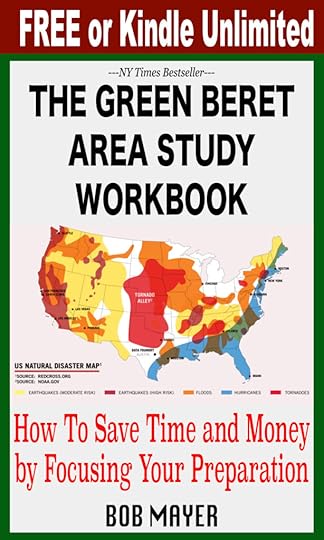
Because understanding the possible threats and dangers where you live is so critical, as evidenced by recent events, I’m giving away my Green Beret Area Study Workbook today and through the 26th on Amazon.
That is all.
July 21, 2025
Can You Do Five Days Without Power?
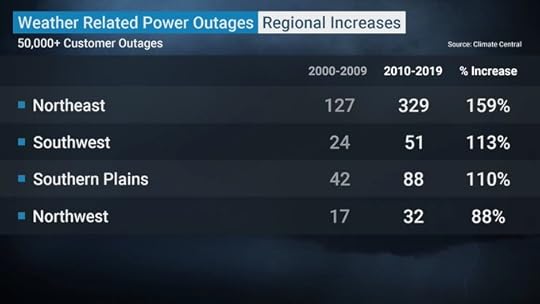
We recently had a tornado touch down here. We were not in the path and only had a tree broken, but were without power for half a day. Not a big deal and I spent most of that time chainsawing the tree. A neighbor came by with his chainsaw and offered to help and we chatted for a while. Then he left. I talked with another neighbor across the street and mentioned I’d moved my Yeti battery inside to handle some things and if the power was still out in the morning, I’d be laying out the solar panels. He laughed.
But then I got to thinking. How would we deal with things if we went five days or a week without power? People who have experienced extended power outages have learned some hard lessons. The smart thing is to consider these lessons and prepare BEFORE it happens to you.
This is particularly important for those in certain areas and at certain times. One example I keep going back to is the city of Phoenix, in the summer, with temperatures over 100 consistently, and not even getting cool at night. I believe if there was an extended power outage there in those circumstances, tens of thousands would die. What about where you live? This is why doing an AREA STUDY is so critical. I have a presentation on how to deal with a power outage but here are lessons learned:
1. **Emergency Preparedness:** Power outages underscore the importance of being prepared for emergencies. People learn to have essential supplies on hand, including non-perishable food, water, flashlights, batteries, and other necessities. For planning purposes, use one gallon a day per person. For five days, five gallons. A case of water equals three days worth per person. So two cases of water would last six days. Here is a presentation on water for emergencies. But consider other things that will add to consumption, like pets. When I boondock with Scout she usually drinks from streams, unless we’re in the desert. Then I have to factor her into my water supply.
2. **Communication:** Without power, traditional communication methods like phones and internet may be unavailable. People learn the value of having alternative means of communication, such as battery-powered radios or hand-crank emergency radios. Water and a radio are two of the four key survival things I tell people to have. I also have a SpotX Satellite Messenger.
3. **Backup Power Solutions:** Individuals and businesses realize the need for backup power solutions, such as generators or solar panels, to maintain basic functions during power disruptions. I have an entire presentation on this. I’ve upgraded from my Yeti to an Anker Solix F3800 with extra battery. I have enough solar panels (6 100 watt, a 200 watt, a 220 watt) to recharge it (if it’s sunny!). At the very least you should have several small power banks so you can charge your phone.
4. **Community Cooperation:** Power outages often lead to neighbors helping each other. People learn the importance of community cooperation and mutual support during times of crisis. Up to a point. I’ll be posting later this about when this breaks down!
5. **Health and Safety:** Individuals recognize the significance of maintaining personal health and safety during power outages. They learn how to handle food safety, keep warm in cold weather, and manage medical needs. A first aid kit is the third of the four key elements to have. But consider special things like medication.
6. **Vulnerable Populations:** Power outages highlight the vulnerabilities of certain populations, such as the elderly, individuals with medical needs, and those with limited resources. This leads to a focus on ensuring these groups are adequately supported during emergencies.
7. **Information Accessibility:** People realize the importance of having access to accurate and timely information during power outages. This highlights the need for community notification systems and emergency communication strategies.
8. **Long-Term Preparedness:** Extended power outages can serve as a reminder that the impacts of certain disasters can last longer than expected. This encourages individuals and communities to consider long-term preparedness measures. There is a point where a wide spread disaster can make you realize the power is NOT coming on any time soon. Do you have plan? One thing I cover in The Green Beret Preparation and Survival Guide is how to make that key decision whether to stay or leave.
July 20, 2025
Bugging Out? Should I Stay Or Should I Go?
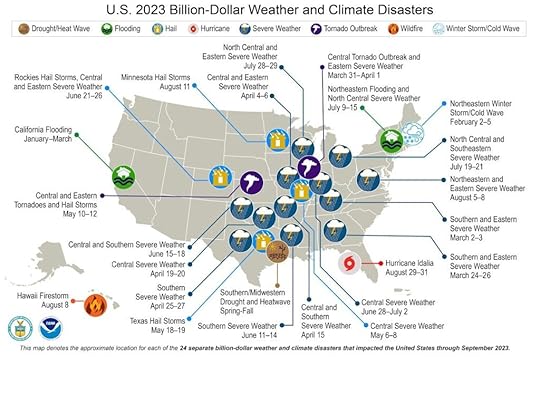
If an evacuation has been called, such as for a hurricane, you evacuate as soon as possible.
For some situations, smart people evacuate before the formal announcement. For example, wild fires are unpredictable and can move fast. Better to be safe.
There is a big difference between an evacuation and bugging out.
An evacuation has the expectation that you will return to your home in the foreseeable future. In this case, it’s as simple as driving away and going to your evacuation point or checking into a hotel. If you live in an area where evacuations are likely, such as a hurricane zone, plan ahead. Have a location you know you can go to and get a room or people you can stay with.
Reasons not to bug out:
You have your primary stockpile of supplies in your house.
You have a community around you who knows you and you know (this could be a good thing or a bad thing).
There is no immediate or foreseeable threat to you and your home, whether natural or man-made.
It does not appear that the situation will degrade.
When to bug out:
The most obvious would be if the home is unlivable. This would happen in the case of an extreme emergency that affects the area. Ultimately the hide site will be the place for your team to meet up if all else fails.
However, making the decision to bug out is a very difficult one if your home is still livable. Because when you bug out, there is a good probability you will not be returning to your home, so we’re talking extreme emergency on a large scale.
There are several predictors on deciding to go to the hide site.
Your home is no longer livable.
The emergency or disaster is something that is approaching you and can’t be stopped. The primary example of this would be a pandemic.
The rule of law has completely broken down and now your home is a target and you cannot adequately defend it
Television stations go blank.
Local FM radio stations go off the air.
The water stops.
The power grid goes down over an extensive area without any sign of repair forthcoming.
Long haul freight trucks are no longer moving. Most urban areas have enough food to last no more than a week.
You’re running out of stocked supplies to the point where you’re considering breaking into your main Grab-n-Go bag. Don’t. Use it to get to your hide site.
Increased military presence, especially if its Federal forces, not National Guard. Federal military Army, Air Force and Marines can only be employed stateside in extreme emergencies. In your Area Study learn the difference and what National Guard units are nearby; what their unit patch is (on the left shoulder) and what unit designations would be marked on the bumpers of their military vehicles.
In cities, if garbage is piling up and not being picked up, eventually this will cause disease. It also indicates a slow breakdown of social order.
There is slim to no possibility of receiving aid. This latter is something people don’t consider in mild or moderate emergencies. Localized emergencies always have the advantage of outside assistance coming in. If an emergency is on a national or international scale, this likelihood is drastically reduced.
A disturbing aspect of this is that while governments will call for evacuations, there really is no protocol for announcing that things have completely gone to s$%t. In fact, it is unlikely that such a thing will ever be announced. The desire to avoid panic will often override reality. Thus you must make this decision on your own.
Make sure you can listen in on the Emergency Broadcast Stations with your survival radio. A smart move is to monitor emergency transmissions in your area. Below is a free app that will allow you to do that. Often the emergency services are better informed than the general public. You can also get an idea of the scope of the emergency or disaster not only from what is being said, but the tone of the emergency personnel.
July 19, 2025
An Area Study Can Save Your Life
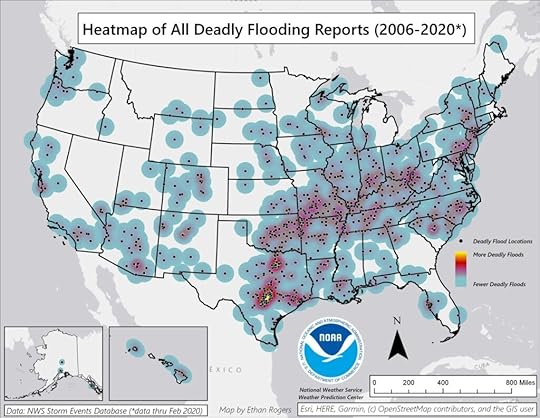
The Area Study focuses your preparation efforts and saves time & money. An Area Study will not only help you prepare, it will also make you much more aware of your situation and improve your quality of life. It assesses your own, and your team’s, assets and liabilities. It can be useful not only in preparation, but in choosing where to live as our environment is changing around us.
Everyone’s situation is unique. We’re different individuals. We have varying households/situations. We live in places with differing climate, terrain, and potential natural and man-made disasters. Thus, before we begin to ‘prepare’, we must know what specifically we’re preparing for and what we’re working with.
By doing a good Area Study, you save time and money because you’ve focused on your priorities. You need to know your assets and your threats. You also have to get the right supplies, training, and gear for your specific situation.
Too often, preparation is looked at as a one-size-fits-all.
When my Special Forces A-Team received a mission packet while in Isolation, the first thing we did was an Area Study. We had to understand where we were going and how that impacted the mission.
This is what we all need to do where we live, work and go to school. This process is what you will do in this workbook with the mission being preparation and survival.
We’ll work outside in. What that means is we start with your Area of Operations, examining climate and terrain, then potential natural and man-made disasters, cover disaster checklists, then zero in on our your family/team, home, work and school. Finally, we’ll cover preparation in terms of a grab-n-go bag based on what you now know, bugging out, and finally notes on scavenging and sustainment.
Area Studies can have non-emergency uses, such as if we’re considering moving to a new place. An Area Study can provide valuable decision-making data. Given climate change, there are many locales where purchasing a home or starting a business might not be a smart idea.
Evaluate your Area of Operations in terms of climate and terrain.
You want to examine your environment for a lot of things. What can harm you? What can help you? What can hide you? What are your enabling factors? What are your disabling factors? What is the terrain and how can it help you or hamper you in movement? What and where are the roads, trails, rail lines, tunnels, etc. What effect does your environment have on you? What are choke points, particularly river crossings, mountain passes, bridges and tunnels?
Then you must be concerned with the man-made and natural events you should prepare for in order of likelihood.
80% of natural disasters include flooding. Do you live in a flood zone? Would you be cut off if your area floods? Note that there are many areas that were not in flood zones just a few years ago, that are now included. A new map includes 6 million more homes than previously mapped.
There are also man-made disasters. Here is a partial list: Car accident, boat/ferry accident, train/subway accident, tall building evacuation, fire, power outage, burglary, robbery, carjacking, civil unrests/riots, firearms accidents, nuclear power plant accident, nuclear weapons, biological weapons and infectious diseases, chemical weapons/accident, and industrial accident.
What industries are in your area? Are your power lines buried? What are you downwind, downstream of? What toxic materials and/or gases would be emitted if there was an accident? Is there a rail line or waterway near you? What is transported on those trains/barges? Where is the closest nuclear power plant and/or storage area? Are there labs in your area that work with dangerous biological agents? What about the local university? Are you in the flood zone of a dam or levee breaking?
This is just the beginning. But by answering these questions you will begin to frame the priority of preparation. This will determine your plans and what supplies and equipment you need. Of course, there are baseline survival supplies every household should have, such as water, first aid kit, emergency radio, etc. but beyond that, an Area Study will give focus.
Yourself and your team: What special skills and background do you have? The people on your team? The key is to know what you can and can’t do, and what those around you can and can’t do. These skills include medical, military, gardening, hunting, survival training and experience, pilot, boat operation, camping, weapons, cooking, land navigation, swimming, communication (personal and technical), construction, problem solving, fire starting, knot tying, the list goes on and on. It also includes the physical condition of yourself and your team members.
Evaluate your home, work and school in a way you haven’t before. What are the dangers that need to fixed? What preparation needs to be done? What plans need to be made?
July 18, 2025
A Water Alarm Can Save Your Life

At the very least, it will save you some expenses and repairs. We have one under every sink in our house and near the sump pump in the basement. After all, we have smoke and CO2 alarms. Water can very dangerous as well.
During the recent floods , many people were shocked awake after flood water was already pouring through their houses. One man said he woke up and reached out and felt water almost coming over the bed.
This simple device, powered by a 9-volt battery screeches when water touches the metal probes on the bottom. We’ve been alerted several times to either sinks overflowing or a leak underneath a sink by these handy devices. At only $12.48 it’s one of the best preparation investments you can make. The Watchdog Water Alarm.
Stay tuned for more preparation and survival gear. Including what documents you should have stored in a fire and water proof small safe that you can grab when you evacuate as well as scanned and uploaded in the cloud.
Nothing but good times ahead!
But if it isn’t, be prepared!
July 17, 2025
What You Need To Know About Food Expiration Dates
Excerpted from:
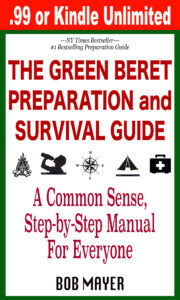
First, there are several terms stamped on the food. This is what they mean:
SELL BY: How long a store should display the product for sale. This is a guide for the store. It is optimum quality date, but food is still edible for a while after.
BEST IF USED BY OR BEFORE DATE: This is only about quality, not safety.
GUARANTEED FRESH DATE: This usually refers to bakery items. They will still be edible after that date.
USE BY DATE: This is the last recommended day to use the product at peak quality. It is still edible after this.
PACK DATE: This is on canned and packaged goods. This actually might not be clear as sometimes it’s in code. It can be done by month-day-year as MMDDYY. Or it could be Julian calendar for the year by day, which means January is numbered 001-0031. December would be 334-365.
Foods not to eat past their expiration date?
Eggs. Deli meat. Mixed greens. Alfalfa sprouts. Oysters. Shrimp. Raw ground beef. Berries. Soft cheese. Chicken.
So how long is food usually good for?
Milk: a week after Sell By.
Eggs: Three to five weeks after you buy them. Double-grade A will go down a grade in a week, but are still edible.
Poultry and seafood: Cook or freeze within a day.
Beef and pork: Cook or freeze within three to four days.
Canned good: High acid foods such as tomato sauce can last to 18 months. Low acid such as canned green beans can last for five years. However, do not store these in a hot space. A dry, cool place, is best.
July 16, 2025
FREE today through 20 July: The Elements Little Black Book

The Little Black Book series is designed the enlighten and entertain.
There are 118 elements. They are the building blocks of our reality. But how much do we know about them?
Every element is covered. How it was discovered. What is unique about it. What it can combine with. Trivia.
How do they combine to make life?
Why are some deadly? What famous people have died because of an element? What are the famous fictional elements
How is the periodic table organized?
A fascinating and fun overview of the building blocks of our reality in easy, bite-sized portions.
July 15, 2025
Are You Prepared? Floods, Wildfires, and more

Most survival books focus on the survival aspect. The Green Beret Preparation and Survival Guide has that, but first, it focuses on preparation. What to do, step by step. Baby steps. With tasks showing you clearly what you need to do. From page one, if you do Task One, you will immediately be more prepared.
You can’t prepare after the fact.
Start now. On sale today for only .99 or Kindle Unlimited.
July 2, 2025
Can You Do Five Days Without Power?
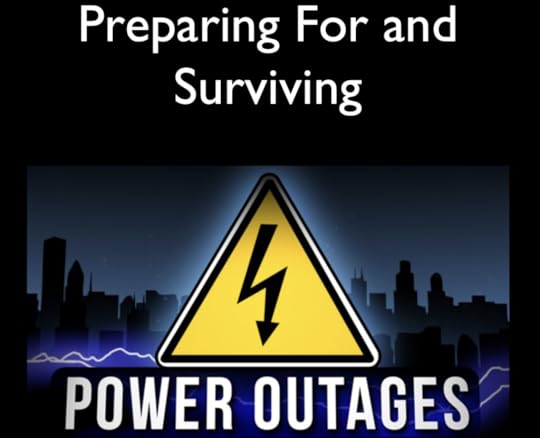
We recently had a tornado touch down here in Knoxville. We were not in the path and only had a tree broken, but were without power for half a day. Not a big deal and I spent most of that time chainsawing the tree. A neighbor came by with his chainsaw and offered to help and we chatted for a while. Then he left. I talked with another neighbor across the street and mentioned I’d moved my Yeti 400 battery inside to handle some things and if the power was still out in the morning, I’d be laying out the solar panels. He laughed.
But then I got to thinking. How would we deal with things if we went five days or a week without power? People who have experienced extended power outages have learned some hard lessons. The smart thing is to consider these lessons and prepare BEFORE it happens to you.
This is particularly important for those in certain areas and at certain times. One example I keep going back to is the city of Phoenix, in the summer, with temperatures over 100 consistently, and not even getting cool at night. I believe if there was an extended power outage there in those circumstances, tens of thousands would die. What about where you live? This is why doing an AREA STUDY is so critical. I have a presentation on how to deal with a power outage but here are lessons learned:
1. **Emergency Preparedness:** Power outages underscore the importance of being prepared for emergencies. People learn to have essential supplies on hand, including non-perishable food, water, flashlights, batteries, and other necessities. For planning purposes, use one gallon a day per person. For five days, five gallons. A case of water equals three days worth per person. So two cases of water would last six days. Here is a presentation on water for emergencies. But consider other things that will add to consumption, like pets. When I boondock with Scout she usually drinks from streams, unless we’re in the desert. Then I have to factor her into my water supply.
2. **Communication:** Without power, traditional communication methods like phones and internet may be unavailable. People learn the value of having alternative means of communication, such as battery-powered radios or hand-crank emergency radios. Water and a radio are two of the four key survival things I tell people to have. I also have a SpotX Satellite Messenger.
3. **Backup Power Solutions:** Individuals and businesses realize the need for backup power solutions, such as generators or solar panels, to maintain basic functions during power disruptions. I have an entire presentation on this. My Yeti 400 could power a cpap machine all night. I have enough solar panels (6 100 watt) to recharge it (if it’s sunny!). When we finally buy a house, I plan on putting in a solar battery pack. At the very least you should have several small power banks so you can charge your phone.
4. **Community Cooperation:** Power outages often lead to neighbors helping each other. People learn the importance of community cooperation and mutual support during times of crisis. Up to a point. I’ll be posting later this week about when this breaks down!
5. **Health and Safety:** Individuals recognize the significance of maintaining personal health and safety during power outages. They learn how to handle food safety, keep warm in cold weather, and manage medical needs. A first aid kit is the third of the four key elements to have. But consider special things like medication.
6. **Vulnerable Populations:** Power outages highlight the vulnerabilities of certain populations, such as the elderly, individuals with medical needs, and those with limited resources. This leads to a focus on ensuring these groups are adequately supported during emergencies.
7. **Information Accessibility:** People realize the importance of having access to accurate and timely information during power outages. This highlights the need for community notification systems and emergency communication strategies.
8. **Long-Term Preparedness:** Extended power outages can serve as a reminder that the impacts of certain disasters can last longer than expected. This encourages individuals and communities to consider long-term preparedness measures. There is a point where a wide spread disaster can make you realize the power is NOT coming on any time soon. Do you have plan? One thing I cover in The Green Beret Preparation and Survival Guide is how to make that key decision whether to stay or leave.



